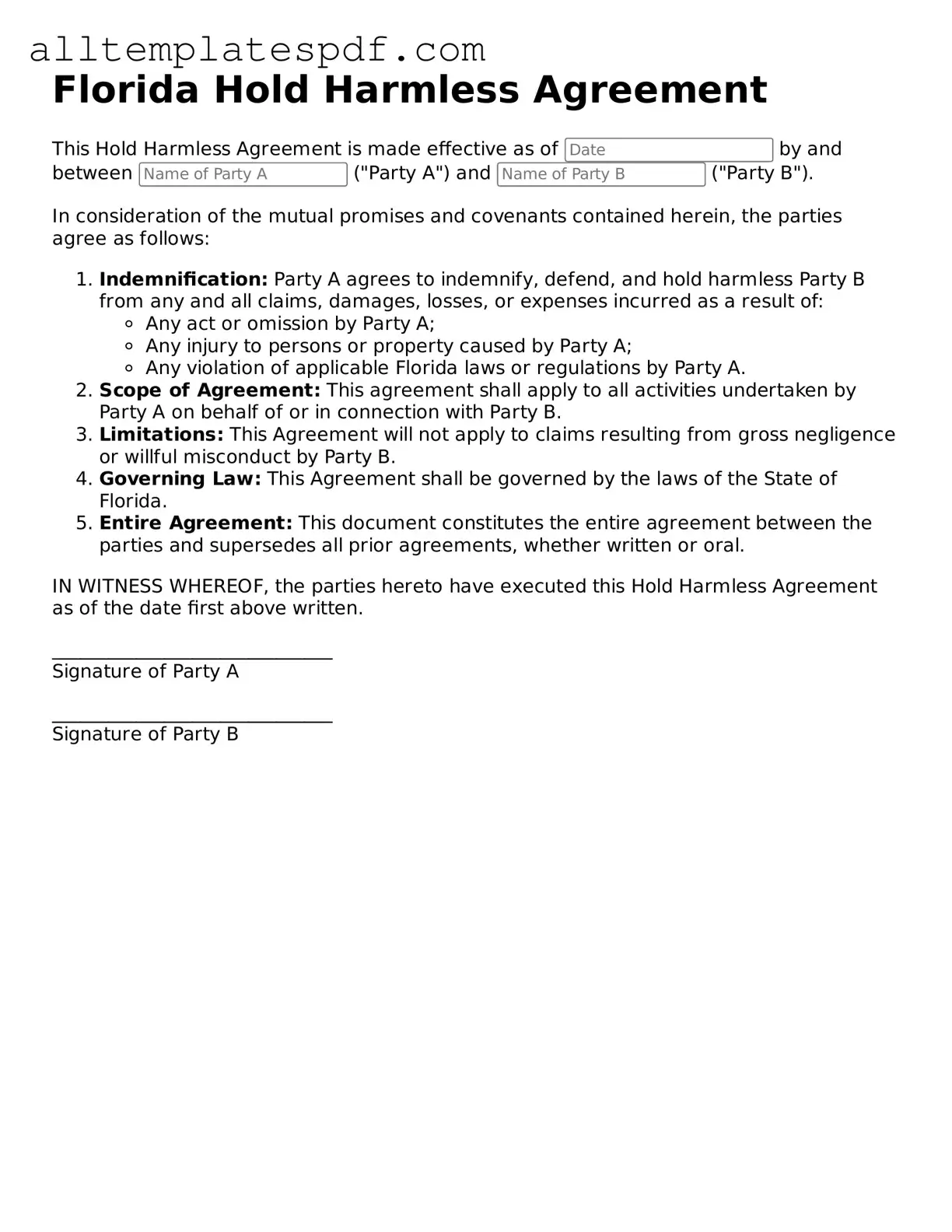When individuals fill out the Florida Hold Harmless Agreement form, they often make several common mistakes that can lead to misunderstandings or legal complications. One frequent error is failing to read the entire document carefully. This oversight can result in signing away important rights without fully understanding the implications. It is crucial to take the time to comprehend each section of the agreement before proceeding.
Another common mistake is neglecting to provide accurate information. Whether it’s personal details or specifics about the activity involved, inaccuracies can invalidate the agreement. Participants must ensure that all names, dates, and descriptions are correct. A simple typo could have significant consequences.
People also frequently overlook the importance of including all relevant parties in the agreement. If a participant fails to name all individuals or entities involved, it can create gaps in protection. The agreement should clearly outline who is covered, as this helps avoid disputes later on.
In addition, many individuals forget to consider the scope of the agreement. The language used should clearly define the extent of liability being waived. Ambiguities can lead to confusion about what is covered and what is not. Therefore, clarity in wording is essential to ensure that all parties understand their responsibilities.
Another mistake is not seeking legal advice when necessary. While it may seem straightforward, the implications of a Hold Harmless Agreement can be complex. Consulting with a legal professional can provide valuable insights and help individuals navigate any potential pitfalls.
Finally, individuals sometimes fail to keep a copy of the signed agreement. Documentation is critical in any legal matter. Without a copy, it may be challenging to enforce the terms of the agreement or prove its existence in the event of a dispute. Keeping a well-organized record can prevent unnecessary complications in the future.
